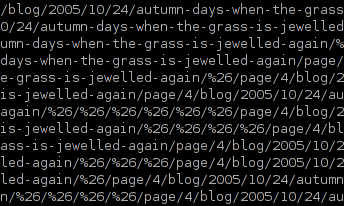Disassembly, Reassembly
In which we try to use metaphor
The past two days at work have largely just been the long slog of writing unit tests for a part of the system which firstly, was one of the hairiest and oldest parts of the system; and secondly, I’ve just rewritten from scratch. In its non-rewritten form it was almost entirely impossible to test, due to its reliance on static code without any sort of injection.
For non-coding people for whom this is all so much “mwah mwah mwah” like the adults in Peanuts: a few weeks ago I was doing some interesting work, to whit, dismantling a creaking horror, putting its parts side by side on the workbench, scraping off the rust and muck and polishing them up, before assembling the important bits back together into a smoother, leaner contraption and throwing away all the spare screws, unidentifiable rusted-up chunks and other bits that didn’t seem to do anything. Now, though, I have the job of going through each of the newly-polished parts of the machine and creating tools to prove that they do what I think they were originally supposed to do. As the old machine was so gummed-up and tangled with spiderwebs and scrags of twine, it was impossible to try to do this before, because trying to poke one part would have, in best Heath Robinson style, accidentally tugged on the next bit and pushed something else that was supposed to be unconnected, setting off a ball rolling down a ramp to trip a lever and drop a counterweight to hit me on the head in the classic slapstick manner. All this testing each aspect of the behaviour of each part of the device is, clearly, a very important task to do, but it’s also a very dull job. Which is why an awful lot of coders don’t like to do it properly, or use it as a “hiding away” job to avoid doing harder work.
Nevertheless, today it did lead me to find one of those bugs which is so ridiculous it made me laugh, so ridiculous that you have a “it can’t really be meant to work like that?” moment and have to dance around the room slightly. I confirmed with the team business analyst that no, the system definitely shouldn’t behave the way the code appeared to. I asked the team maths analyst what he thought, and he said, “actually, that might explain a few things.”

 Home
Home

